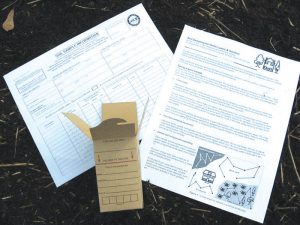Darrell Blackwelder: Proper lime application guidelines
Published 12:00 am Sunday, April 7, 2019

- Art by Mark Brincefield for the Salisbury Post
Spring has arrived, and many are excited about their yards and gardens. Adding lime to lawns and gardens is often a required chore, but some apply lime incorrectly.
Below are a few facts about lime application:
• Lime is a soil amendment. Dolomitic lime contains both calcium and magnesium.
• Lime is available in powdered or pelletized form for easy application.
• The soil amendment is applied to raise the soil pH. Soils in our area are clay type soils with low pH. 7 is neutral — any level below 7 is acidic —while levels above 7 are alkaline.
• Lime can be applied at any time of the year. However, fall is usually the best time for application.
• Most plants, including fescue and garden vegetables, grow best in slightly acidic soils with a pH of 6.0-6.5. Soils with a pH below 6.0 are considered too acidic for optimal growth.
• Plants such as azaleas, rhododendron and blueberries grow best in soils with a soil pH below 6.0.
• Both low and high pH soils inhibit the uptake of nutrients.
• Soil testing is mandatory to determine both soil nutrient and pH levels.

Soil testing kits are available at the NC Cooperative Extension Office on Old Concord Road. Photo by Darrell Blackwelder.
• Applying lime or any other plant nutrients without soil testing can be detrimental to plant growth and nonproductive. The phrase “You can’t put down too much lime” is incorrect — in fact, you can.
• Soil testing is conducted by the NC Dept. of Agriculture. The kits are available at the NC Cooperative Extension Office on Old Concord Road in Salisbury.



